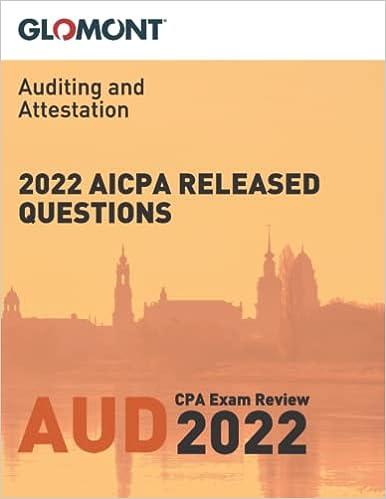Question
FIN 551-Financial Data Analysis Integrative Case Study: Starbucks Part 3 of 3 Chapter 11- Dividends-Based Valuation of Starbucks Common Equity Integrative Case 10.1 projected ?nancial
FIN 551-Financial Data Analysis
Integrative Case Study: Starbucks Part 3 of 3
Chapter 11- Dividends-Based Valuation of Starbucks Common Equity
Integrative Case 10.1 projected ?nancial statements for Starbucks for Years 1 through 5. This portion of the Starbucks Integrative Case applies the techniques of this chapter to compute Starbucks required rate of return on equity and Starbucks share value using the dividends-based valuation model. This case also compares the value estimate to Starbucks share price at the time of the case development to provide an investment recommendation. Assume the market equity beta for Starbucks at the end of 2012 was 0.75. Assume that the risk-free interest rate was 3.0% and the market risk premium was 6.0%. Starbucks had 749.3 million shares outstanding at the end of 2012, and the share price was $50.15.
Chapter 11- 7 questions
a. Use the CAPM to compute the required rate of return on equity capital for Starbucks.
b. Compute the weighted-average cost of capital for Starbucks as of the start of Year 1. At the start of Year 1, Starbucks had $550 million in outstanding interest-bearing debt on the balance sheet and no preferred stock. Assume that the balance sheet value of Starbucks debt is approximately equal to the market value of the debt. Assume that at the start of Year 1, Starbucks will incur interest expense of 6.25% on debt capital and that Starbucks average tax rate is 33.0%.
c. From your forecast of Starbucks' financial statement for years +1 thought +5, derive the projected dividends using the projected amounts for the plug to dividends minus the net amounts of common stock issued each year (if any). Then compute projected dividends for Starbucks for years +1 through +5 using the clean surplus accounting approach based on projected amounts for comprehensive income and common shareholders equity. the amounts of dividends under the two approaches should be identical
d. Use the clean surplus accounting approach to project the continuing dividend in Year 6. Assume that the steady-state long-run growth rate will be 3% in Year 6 and beyond. = 5 points
e. Using the required rate of return on common equity capital from Requirement a as a discount rate, compute the sum of the present value of dividends for Starbucks for Years 1 through 5.
f. Using the required rate of return on common equity capital from Requirement a as a discount rate and a 3.0% long-run growth rate, compute the continuing value of Starbucks as of the beginning of Year 6 based on Starbucks continuing dividends in Year 6 and beyond. After computing continuing value, discount it to present value at the start of Year 1. = 5 points
g. Compute the value of a share of Starbucks common stock, as follows:
(1) Compute the sum of the present value of dividends including the present value of continuing value.
(2) Adjust the sum of the present value using the midyear discounting adjustment factor.
(3) Compute the per-share value estimate.
i. What reasonable range of share values would you expect for Starbucks common stock? Where is the current price for Starbucks shares relative to this range? What do you recommend?
Chapter 12 - Free Cash Flows Valuation of Starbucks Common Equity
In Case 10.1, we projected ?nancial statements for Starbucks for Years 1 through 5. In this portion of the Starbucks Integrative Case, we use the projected ?nancial statements from Case 10.1 and apply the techniques learned in this chapter to compute Starbucks required rate of return on equity and share value based on the free cash ?ows valuation models. We also compare our value estimate to Starbucks share price at the time of the case development to provide an investment recommendation. The market equity beta for Starbucks at the end of 2012 is 0.75. Assume that the risk-free interest rate is 3.0% and the market risk premium is 6.0%. Starbucks has 749.3 million shares outstanding at the end of 2012. At the start of Year 1, Starbucks share price was $50.15
Chapter 12- 5 questions
b. Using your projected ?nancial statements from Case 10.1 for Starbucks, begin with projected net cash ?ows from operations and derive the projected free cash ?ows for common equity shareholders for Starbucks for Years 1 through 5. You must determine whether your projected changes in cash are necessary for operating liquidity purposes. = 5 points
c. Project the continuing free cash ?ow for common equity shareholders in Year 6. Assume that the steady-state, long-run growth rate will be 3% in Year 6 and beyond. Project that the Year 5 income statement and balance sheet amounts will grow by 3% in Year 6; then derive the projected statement of cash ?ows for Year 6. Derive the projected free cash ?ow for common equity shareholders in Year 6 from the projected statement of cash ?ows for Year 6. = 5 points
d. Using the required rate of return on common equity from Requirement a as a discount rate, compute the sum of the present value of free cash ?ows for common equity share holders for Starbucks for Years 1 through 5. = 5 points
e. Using the required rate of return on common equity from Requirement a (completed Chapter 11 a) as a discount rate and the long-run growth rate from Requirement c, compute the continuing value of Starbucks as of the start of Year 6 based on Starbucks continuing free cash ?ows for common equity shareholders in Year 6 and beyond. After computing continuing value as of the start of Year 6, discount it to present value at the start of Year 1. = 5 points
f. Compute the value of a share of Starbucks common stock.
(1) Compute the total sum of the present value of free cash ?ows for equity share-holders (from Requirements d and e).
(2) Adjust the total sum of the present value using the midyear discounting adjustment factor.
(3) Compute the per-share value estimate.
Chapter 13- Residual Income Valuation of Starbucks Common Equity
In Integrative Case 10.1, we projected ?nancial statements for Starbucks for Years 1 through 5. In this portion of the Starbucks Integrative Case, we use the projected ?nancial statements from Integrative Case 10.1 and apply the techniques in Chapter 13 to compute Starbucks required rate of return on equity and share value based on the residual income valuation model. We also compare our value estimate to Starbucks share price at the time of the case to provide an investment recommendation. The market equity beta for Starbucks at the end of 2012 is 0.75. Assume that the risk-free interest rate is 3.0% and the market risk premium is 6.0%. Starbucks has 749.3 million shares outstanding at the end of 2012. At the start of Year 1, Starbucks share price was $50.15.
Chapter 13- 6 questions
b. Using your projected ?nancial statements from Integrative Case 10.1 for Starbucks, derive the projected residual income for Starbucks for Years 1 through 5. = 5 points
c. Project the continuing residual income in Year 6. Assume that the steady-state, long-run growth rate will be 3% in Year 6 and beyond. Project that the Year 5 income statement and balance sheet amounts will grow by 3% in Year 6; then derive the projected residual income for Year 6. = 7.5 points
d. Using the required rate of return on common equity from Requirement a (completed Chapter 11 a) as a discount rate, compute the sum of the present value of residual income for Starbucks for Years 1 through 5. = 5 points
e. Using the required rate of return on common equity from Requirement a as a discount rate and the long-run growth rate from Requirement c, compute the continuing value of Starbucks as of the start of Year 6 based on Starbucks continuing residual income in Year 6 and beyond. After computing continuing value as of the start of Year 6, discount it to present value at the start of Year 1. = 7.5 points
f. Compute the value of a share of Starbucks common stock.
(1) Compute the total sum of the present value of all future residual income (from Requirements d and e).
(2) Add the book value of equity as of the beginning of the valuation (that is, as of the end of 2012, or the start of Year 1).
(3) Adjust the total sum of the present value of residual income plus book value of common equity using the midyear discounting adjustment factor.
(4) Compute the per-share value estimate.
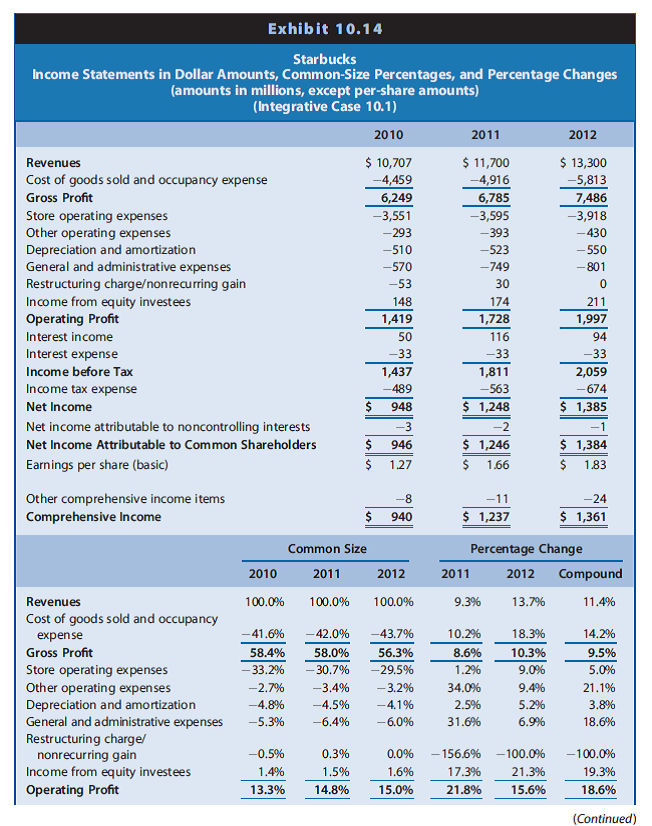
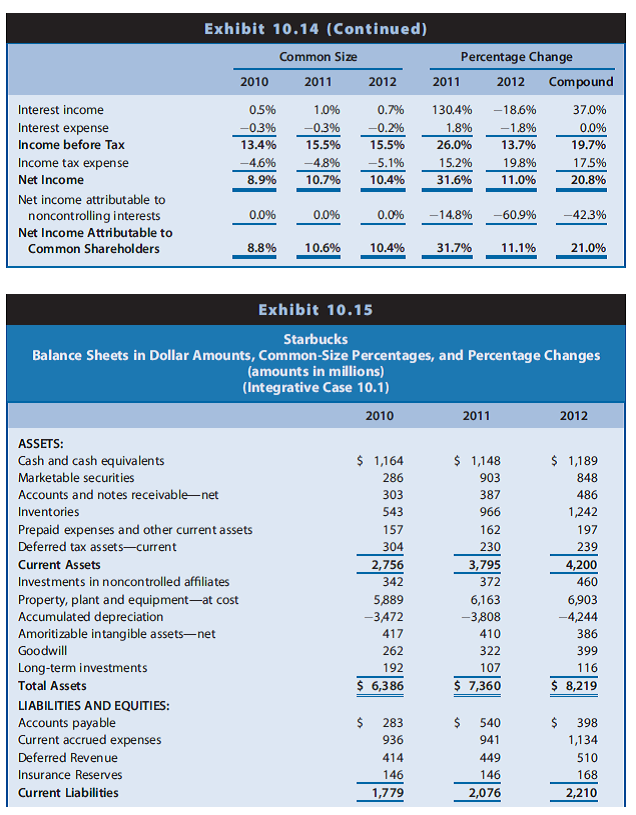
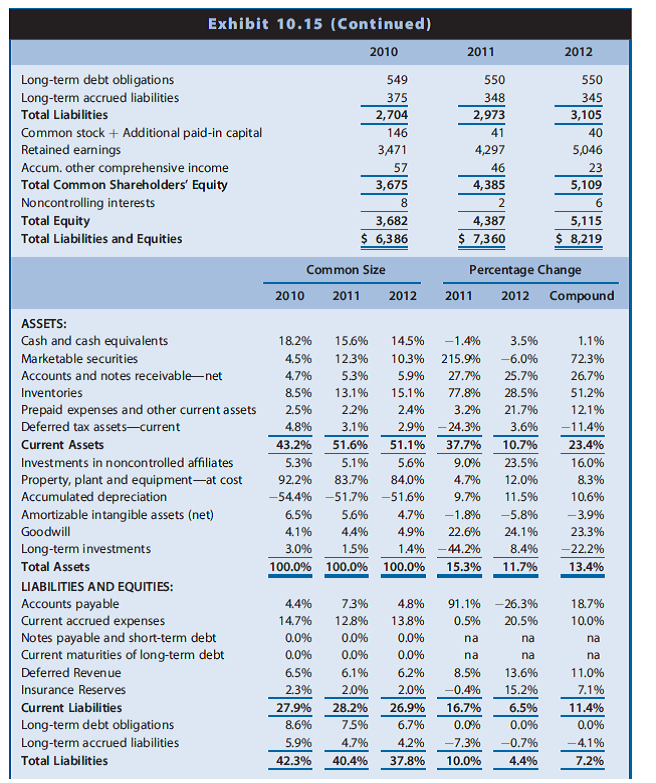
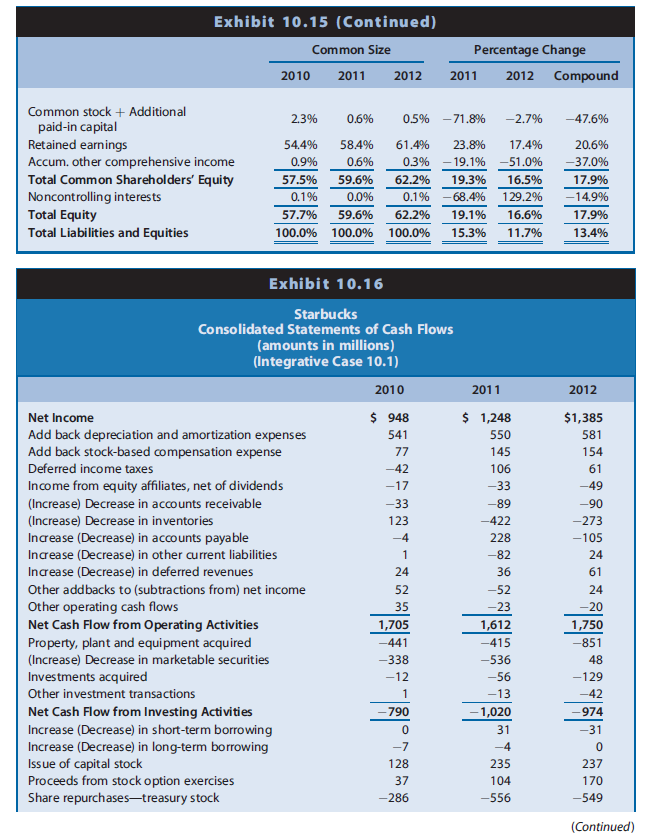
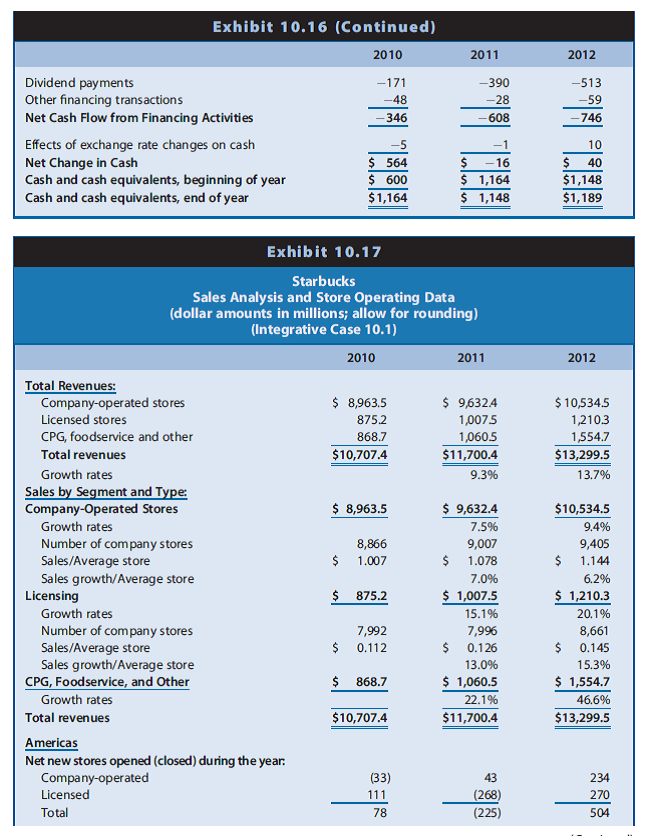
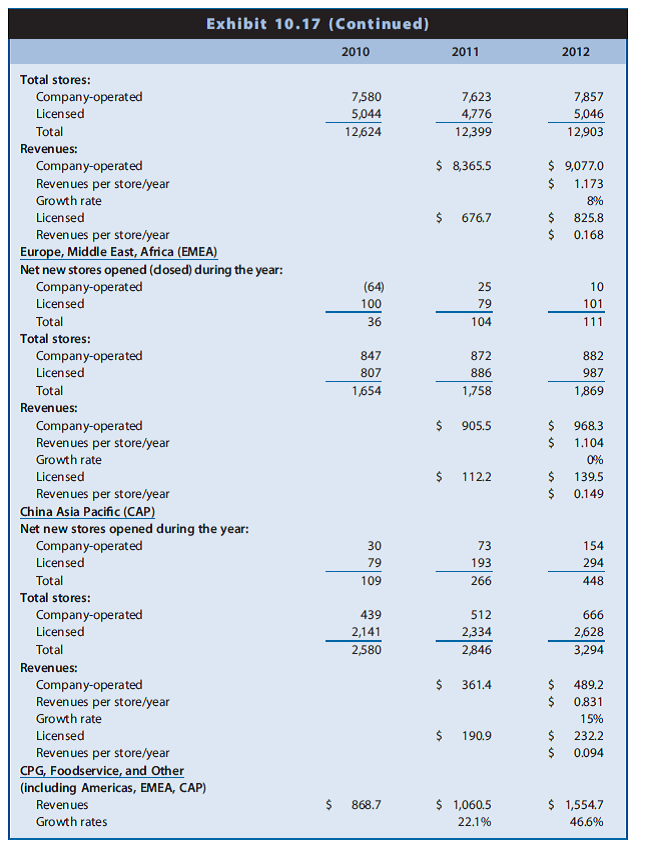
If you need to refer to more financial statements from Chapter 1
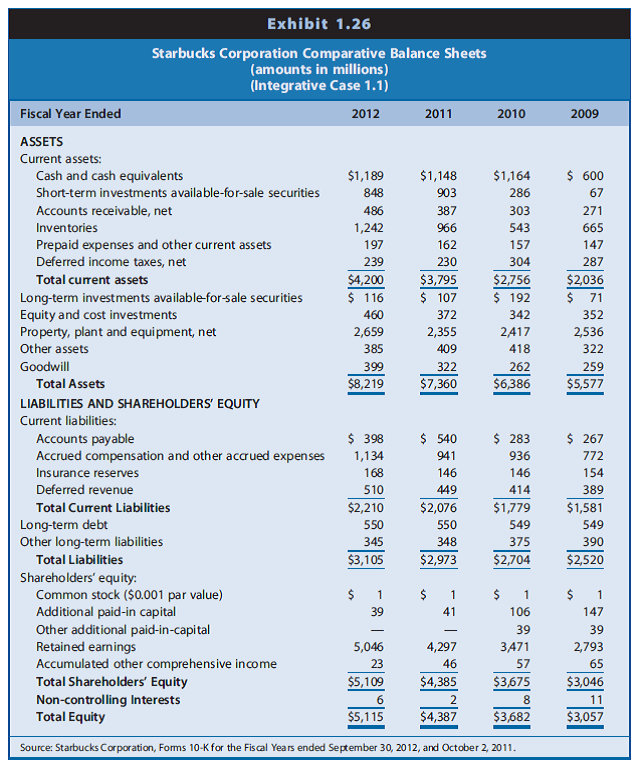
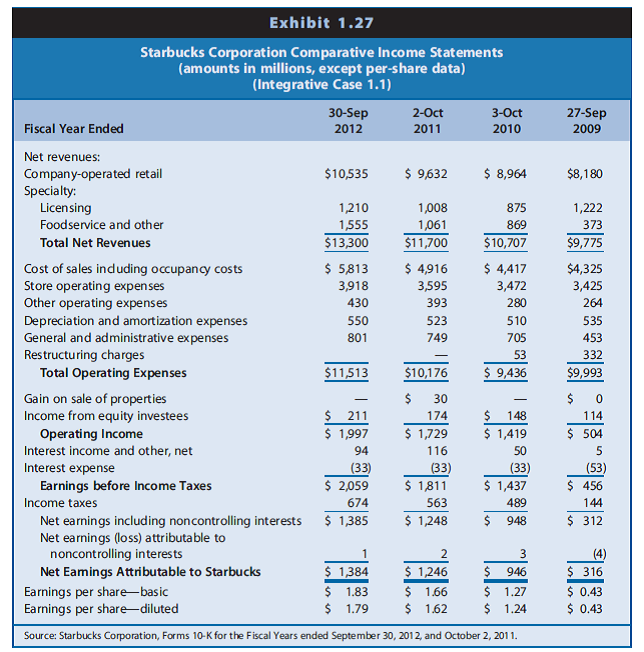
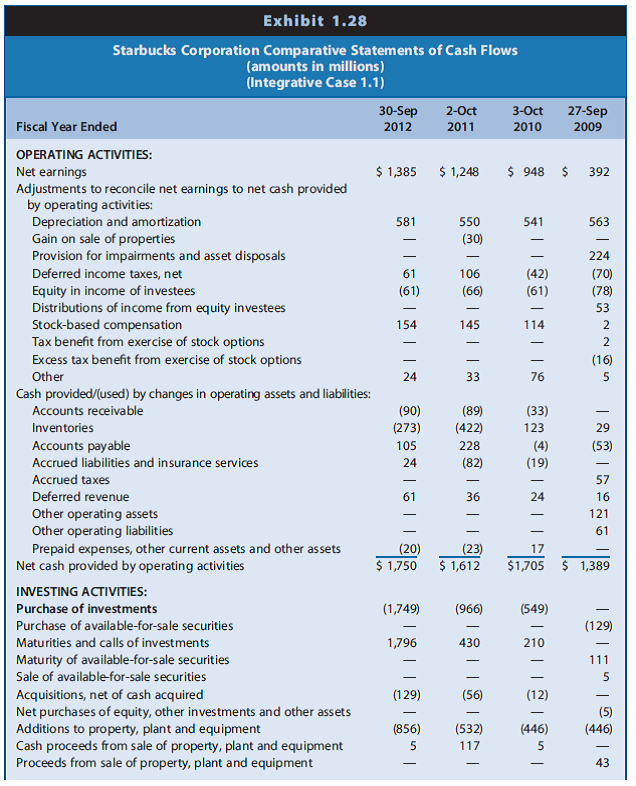
Step by Step Solution
There are 3 Steps involved in it
Step: 1

Get Instant Access to Expert-Tailored Solutions
See step-by-step solutions with expert insights and AI powered tools for academic success
Step: 2

Step: 3

Ace Your Homework with AI
Get the answers you need in no time with our AI-driven, step-by-step assistance
Get Started


